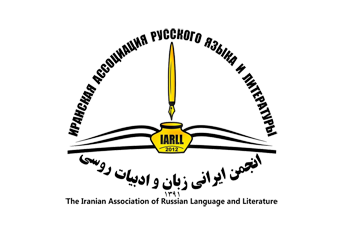THE PROBLEM OF THE RELATIONSHIP OF ART TO REALITY IN THE WORK OF I.F. ANNENSKY
DOI:
https://doi.org/10.61186/iarll.24.8Keywords:
I.F. Annensky, Art, Poetry, Reality, Realism, Russian Poetry, Poetic SpaceAbstract
This article explores the complex relationship between art and reality in the works of I.F. Annensky, a poet whose oeuvre has elicited varied interpretations over the years. The late 19th century, particularly the last three decades, is characterized by an inner contradiction: a profound disillusionment with populism and a loss of life's coherence (often termed the "philosophy of pessimism"), juxtaposed with a relentless quest for the ideal and new meanings of existence. The article highlights a growing trend towards historicism in thought, evident in Annensky's work, which reflects a return to the experiences of past centuries. His literary and civic stances were often perplexing to contemporaries, and even today, scholarly opinions remain divided. While Annensky's early lyrics resonate with Symbolism and modernist trends, this study reveals a deep-seated desire to engage with and comprehend reality. The authors conclude that Annensky's artistic vision emerged from a confluence of complementary yet sometimes conflicting influences, with a persistent focus on the representation of reality at its core.
Extended abstract:
This article examines the specifics of the relationship between art and reality in the works of I. F. Annensky, a poet whose creative output has been the subject of controversial interpretations by researchers for many years. Generally speaking, the intellectual and artistic phenomenon of the last three decades of the 19th century can be characterized by internal contradictions: on the one hand, a painful disillusionment with populism and the loss of a sense of life's integrity and meaning (often referred to as the "philosophy of pessimism"), and on the other, a persistent and desperate struggle for the ideal of an active personality and the search for new meaning and value in existence. At the same time, it is important to note the growing tendency toward historicism in thinking, as well as a return to understanding the experiences of past centuries, which is clearly evident in the works of I. F. Annensky. Both the literary and civic positions of Annensky seemed incomprehensible to many of his contemporaries. Even today, despite numerous studies, opinions about his work remain divided.
While the early lyrics of I. F. Annensky undoubtedly reflect the trends of symbolism and other modernist movements in literature and art, this article demonstrates that even in his early poems, there are profound indications of a desire to understand reality rather than escape from it.
Throughout the 20th century, Annensky's poetry received high praise from leading literary scholars, but it was often studied only as one component of the broader literary process of the late 19th and early 20th centuries, primarily within the context of Russian symbolism. This narrow approach to the study of Annensky's lyrics has led to his being frequently labeled as a symbolist, an aesthete continuing European traditions, or even an existentialist. However, such categorizations overlook the unique specificity of his creative manner. Against this backdrop, the purpose of this article is to identify the distinctive features of the relationship between art and reality in Annensky's work.
The authors' hypothesis is that the development of the creative motive in Annensky's lyrics, within the complex and multifaceted picture of his artistic world, was ultimately decisive. The study establishes that even in Annensky's early poems, there are contextual-associative components of meaning that indicate a profound desire to depict reality. The material for this research is the poetic space of I. F. Annensky. The methods employed include complex analysis of the artistic text, comparative and contrastive analysis, component analysis, and analysis of contextual-associative elements within the artistic text.
The innovation of this study lies in identifying the unique semantic elements of Annensky's poetic space, which confirm his deep aspiration to understand and describe reality. The authors conclude that the artistic world of I. F. Annensky was shaped by a multitude of complementary, and at times mutually exclusive, tendencies. However, its foundation was always the reflection of reality.
Downloads
Published
How to Cite
Issue
Section
License
Copyright (c) 2024 Issledovatel'skiy Zhurnal Russkogo Yazyka I Literatury

This work is licensed under a Creative Commons Attribution 4.0 International License.
![]()
"Creative Commons Attribution 4.0 International (CC-BY 4.0)"


